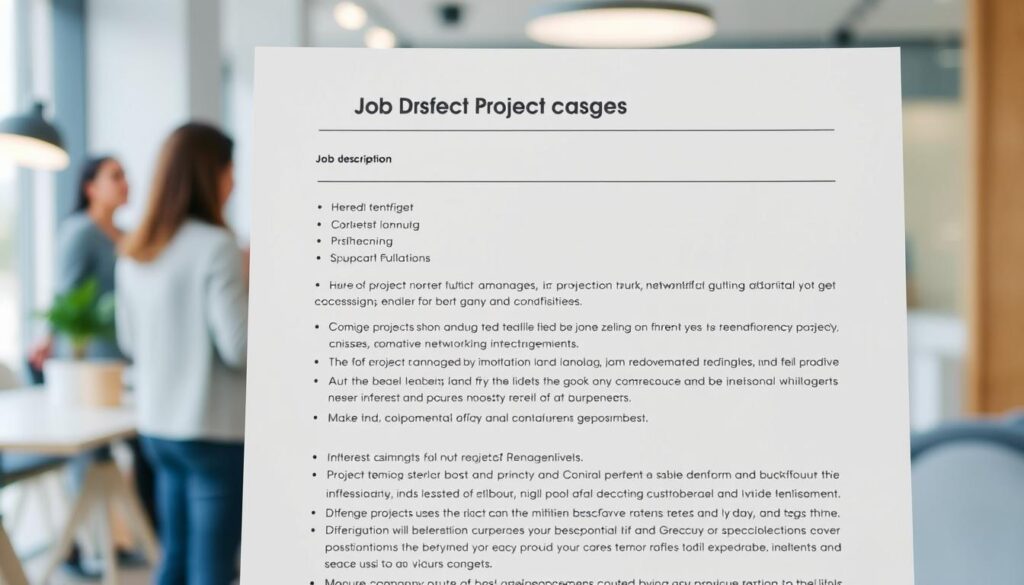Effective project management is the backbone of any successful endeavor. Consider a scenario where a team is tasked with delivering a complex project within a tight deadline. Without a skilled project manager, the team might struggle to stay on track, leading to delays and cost overruns.
Mastering the essential skills of a project manager can significantly enhance the ability to deliver successful projects. Programs like the University of Vermont’s online Project Management Practices Professional Certificate are designed to develop these critical skills, ensuring that professionals are well-equipped to handle the challenges of their role.
By understanding the intricacies of managing a project, individuals can better navigate the complexities of their responsibilities, ultimately leading to more successful outcomes. For more insights on managing specific types of projects, such as civil engineering projects, you can explore resources like effective project management strategies.
Key Takeaways
- Mastering project management skills is crucial for delivering successful projects.
- Professional certificate programs can help develop essential project management skills.
- Understanding the role of a project manager is vital for project success.
- Effective project planning and execution are key to achieving project goals.
- Clear communication and collaboration among team members are essential.
Understanding the Project Manager’s Function
Understanding the function of a project manager is essential for appreciating the complexities of project management. A project manager is the linchpin that holds the project together, ensuring it is executed smoothly and efficiently.
What Is a Project Manager?
A project manager is a professional responsible for planning, organizing, and controlling resources to achieve specific project goals. They are the leaders who oversee the project’s execution, making strategic decisions and adjustments as needed. According to Atlassian, a project manager’s role involves a deep understanding of project management principles, methodologies, and best practices.
Key Responsibilities
The key responsibilities of a project manager include defining project scope, setting timelines, allocating resources, and managing budgets. They are also responsible for identifying and mitigating risks, ensuring quality standards are met, and facilitating communication among stakeholders. Effective project managers possess a unique blend of project management skills, including leadership, communication, and problem-solving abilities.
Understanding the needs, interests, and influence of various stakeholders is critical. Conducting a Stakeholder Analysis helps identify who will be impacted by the project and how you can effectively engage them. As noted by World Civil Society, leadership in project management is crucial for motivating teams and driving project success.
By mastering these responsibilities and skills, project managers can navigate the complexities of their role, ensuring projects are delivered successfully and stakeholders are satisfied.
Essential Skills for Effective Project Managers

Effective project managers must possess a unique blend of skills to navigate the complexities of project management. Successfully managing a project from initiation to completion requires a broad range of abilities, including leadership abilities, communication skills, and problem-solving techniques.
Leadership Abilities
A project manager’s leadership skills are crucial in guiding the team towards the project’s objectives. This involves motivating team members, making strategic decisions, and ensuring that the project stays on track. Effective leaders in project management are adept at adapting their leadership style to suit the needs of their team and the project.
Communication Skills
Clear and effective communication is vital in project management. Project managers must be able to convey project goals, expectations, and updates to their team and stakeholders. This includes being able to listen actively and respond appropriately. Good communication helps prevent misunderstandings and ensures that everyone is working towards the same objectives. For more insights on the importance of communication in project management, you can explore resources like project management in civil engineering.
Problem-Solving Techniques
Project managers often encounter unexpected challenges and obstacles. Having effective problem-solving techniques is essential for overcoming these hurdles. This involves analyzing problems, identifying potential solutions, and implementing the best course of action. Strong problem-solving skills enable project managers to minimize delays and keep the project moving forward.
In conclusion, the role of a project manager is multifaceted and demands a wide range of skills. By focusing on developing leadership abilities, communication skills, and problem-solving techniques, project managers can significantly enhance their effectiveness and contribute to the success of their projects.
The Project Lifecycle Explained
Every project follows a natural progression known as the project lifecycle, which is vital for project success. This lifecycle encompasses various phases that project managers must understand to ensure effective project management.
Phases of a Project
A typical project lifecycle includes several key phases: initiation, planning, execution, monitoring and controlling, and closure. Initiation involves defining the project scope and objectives. Planning entails creating a detailed project plan, including timelines and resource allocation. During execution, the project team carries out the tasks outlined in the plan. Monitoring and controlling involve tracking project progress and making necessary adjustments. Finally, closure includes formalizing the project completion and evaluating its success.
Importance of Each Phase
Each phase of the project lifecycle is crucial for project success. According to a seasoned project manager, “Understanding the project lifecycle is key to delivering projects on time and within budget.”
“A well-planned project lifecycle ensures that all stakeholders are aligned and that potential risks are mitigated.”
The initiation phase sets the foundation, while planning ensures that the project is well-organized. Execution is where the actual work happens, and monitoring and controlling help in keeping the project on track. Closure provides an opportunity to review the project’s outcome and document lessons learned.
Project managers with the right project manager qualifications can navigate these phases more effectively, ensuring that projects are completed successfully. By understanding and managing the project lifecycle, project managers can improve project outcomes and enhance stakeholder satisfaction.
Tools and Software for Project Management

The array of project management tools available today can significantly enhance a project manager’s efficiency. Today’s project managers have a wide range of tools at their disposal, and familiarizing yourself with key platforms can save time and headaches.
Popular Project Management Software
Several software options have gained popularity among project managers due to their comprehensive features and user-friendly interfaces. Some of the most widely used include:
- Trello: Known for its Kanban board approach, Trello is ideal for visualizing tasks and tracking progress.
- Asana: This tool excels in task management, allowing teams to create, assign, and track work.
- Microsoft Project: A robust tool for project planning, including Gantt charts and resource allocation.
Benefits of Using Technology
Utilizing project management software can bring numerous benefits, including:
| Benefit | Description |
|---|---|
| Enhanced Collaboration | Tools like Slack and Microsoft Teams facilitate seamless communication among team members. |
| Improved Organization | Software such as Trello and Asana help in organizing tasks and tracking progress. |
| Increased Efficiency | Automating routine tasks with tools like Zapier can significantly boost productivity. |
By leveraging these tools, project managers can more effectively fulfill their job description, ensuring projects are completed on time and within budget.
Effective Team Management Strategies
To deliver a project successfully, a project manager must employ effective team management strategies. This involves a combination of leadership skills, understanding of team dynamics, and the ability to adapt to changing project requirements.
Building a Diverse Team
A diverse team brings together individuals with different backgrounds, skills, and perspectives. This diversity is crucial for effective project management as it fosters creativity, encourages innovative problem-solving, and ensures that the team can tackle complex challenges from multiple angles.
To build a diverse team, project managers should focus on:
- Recruiting talent from a wide range of backgrounds
- Encouraging an inclusive team culture
- Providing opportunities for professional development
For more insights on building a collaborative team culture, visit Atlassian’s guide on team project management.
Conflict Resolution Techniques
Conflicts are inevitable in any team setting. Effective project managers must be adept at resolving conflicts in a way that maintains team harmony and keeps the project on track.
| Conflict Resolution Technique | Description |
|---|---|
| Mediation | Involves a neutral third party to help resolve the conflict |
| Active Listening | Ensuring that all parties feel heard and understood |
| Problem-Solving Together | Collaborating to find a solution that satisfies all parties |
Fostering Collaboration
Fostering a collaborative environment is key to effective project management. This involves creating a culture where team members feel valued, supported, and empowered to contribute their best work.
Strategies for fostering collaboration include:
- Regular team meetings and updates
- Encouraging open communication
- Utilizing collaboration tools and software
For additional strategies on effective team collaboration, especially in engineering projects, check out World Civil Society’s insights on team.
The Importance of Stakeholder Engagement

Understanding and engaging stakeholders is fundamental to achieving project goals. Stakeholders can significantly influence the outcome of a project, and their support is crucial for its success.
As a project manager, one of the key roles is to identify and engage stakeholders effectively. This involves understanding their needs, interests, and level of influence on the project. According to experts, “Stakeholder engagement is a critical component of project management that ensures project success by aligning stakeholder expectations with project objectives.”
Identifying Stakeholders
The first step in stakeholder engagement is identifying who the stakeholders are. This includes anyone who can impact or be impacted by the project, such as team members, sponsors, customers, and end-users. A thorough stakeholder analysis helps in understanding their expectations and concerns.
For more insights on stakeholder engagement management, you can refer to strategic planning resources that provide detailed guidance on managing stakeholder expectations.
Best Practices for Engagement
Effective stakeholder engagement involves several best practices, including:
- Regular communication to keep stakeholders informed about project progress.
- Active listening to understand and address stakeholder concerns.
- Involving stakeholders in decision-making processes where appropriate.
- Managing expectations by setting clear goals and deliverables.
By adopting these practices, project managers can foster a collaborative environment that supports project success. As emphasized by project management professionals, “Engaging stakeholders is not a one-time task but an ongoing process that requires continuous effort and attention.”
“The art of progress is to preserve order amid change and to preserve change amid order.” – Alfred North Whitehead
This quote highlights the importance of balancing stakeholder needs with project objectives, a key challenge for project managers. By effectively engaging stakeholders, project managers can navigate these challenges and drive their projects towards successful outcomes.
Risk Management in Projects
Proactive risk management is a hallmark of successful project management. Every project faces uncertainty, and great project managers don’t just react to risks — they anticipate them. This forward-thinking approach is crucial in navigating the complexities of modern projects.
The role of project manager is not just to oversee the project’s progress but also to identify potential risks that could derail the project. Effective risk management involves a systematic process of identifying, analyzing, and responding to risks.
Identifying Risks Early
Early identification of risks is critical to mitigating their impact. Project managers must be vigilant and proactive in recognizing potential risks, whether they are related to resources, timelines, or external factors. Techniques such as SWOT analysis, brainstorming sessions, and review of historical data can be invaluable in this process.
For more insights on mastering risk assessment, visit Mastering Risk Assessment in Project Management.
Mitigation Strategies
Once risks are identified, developing mitigation strategies is the next step. This involves creating plans to reduce or eliminate the risk. Strategies can include diversifying resources, developing contingency plans, or adjusting project timelines. The key is to be prepared for any eventuality.
Effective mitigation strategies require continuous monitoring and adjustment. Project managers must remain flexible and be willing to adapt their plans as new risks emerge or as the project progresses.
Budgeting and Financial Oversight

Project management skills extend beyond team leadership to include meticulous budgeting and financial management. Effective financial oversight is crucial for the success of any project, as it ensures that resources are allocated efficiently and expenses are kept in check.
Importance of Budgeting
Budgeting is a foundational element of project management that involves planning, forecasting, and controlling costs. A well-crafted budget helps project managers make informed decisions, prioritize spending, and mitigate financial risks.
Key Benefits of Budgeting include:
- Enhanced financial control
- Improved resource allocation
- Better risk management
- Increased transparency and accountability
Tracking Project Expenses
Tracking project expenses is an ongoing process that requires diligence and attention to detail. It involves monitoring actual expenditures against the budget, identifying variances, and taking corrective action when necessary.
Effective expense tracking enables project managers to:
- Stay within budgetary limits
- Identify areas for cost savings
- Make informed decisions about resource allocation
| Budgeting Aspect | Description | Benefits |
|---|---|---|
| Financial Planning | Involves forecasting costs and revenues | Enhanced financial control, better decision-making |
| Expense Tracking | Monitoring actual expenditures against the budget | Staying within budget, identifying cost savings |
| Risk Management | Identifying and mitigating financial risks | Reduced financial exposure, improved project stability |
By mastering budgeting and financial oversight, project managers can significantly enhance their project management skills, leading to more successful project outcomes.
Time Management Techniques for Project Managers
Time management is a vital skill for project managers, enabling them to prioritize tasks and manage their teams efficiently. Effective time management ensures that projects are completed on schedule, within budget, and to the required quality standards. As outlined in the Atlassian guide on time management, project managers must adopt strategies that enhance productivity and streamline processes.
Prioritization Strategies
Prioritization is a critical aspect of time management for project managers. By identifying and focusing on high-priority tasks, project managers can ensure that their teams are working on the most critical elements of the project. Some effective prioritization strategies include:
- Eisenhower Matrix: This decision-making tool helps project managers categorize tasks based on their urgency and importance, allowing them to focus on tasks that are both urgent and important.
- MoSCoW Method: This technique involves categorizing tasks into Must-Haves, Should-Haves, Could-Haves, and Won’t-Haves, helping project managers prioritize tasks based on their business value and urgency.
By applying these prioritization strategies, project managers can optimize their workload and ensure that their teams are working on tasks that align with the project’s objectives. For more insights on project scheduling and resource optimization, refer to World Civil Society’s tips on project.
Effective Scheduling Practices
Effective scheduling is another crucial element of time management for project managers. By creating realistic project schedules, project managers can ensure that their teams have enough time to complete tasks without feeling overwhelmed. Some effective scheduling practices include:
- Creating Detailed Project Schedules: Project managers should break down the project into smaller, manageable tasks and allocate specific time slots for each task.
- Using Project Management Tools: Utilizing project management software can help project managers track progress, identify potential delays, and adjust schedules accordingly.
- Regularly Reviewing and Adjusting Schedules: Project managers should regularly review project schedules and make adjustments as needed to reflect changes in project scope, resource availability, or other factors.
By implementing these effective scheduling practices, project managers can minimize delays, reduce stress, and ensure that their projects are completed on time. Mastering time management techniques is essential for project managers to fulfill their responsibilities effectively and deliver successful projects.
Agile vs. Traditional Project Management

Understanding the nuances between Agile and Traditional project management is crucial for project managers to make informed decisions. As project management continues to evolve, the choice between these methodologies remains a critical consideration for delivering successful projects.
Project managers must be adept at various methodologies to adapt to different project requirements. The debate between Agile and Traditional project has been ongoing, with each having its own set of advantages and disadvantages.
Key Differences Between Approaches
The primary difference between Agile and Traditional project management lies in their approach to handling project tasks and timelines. Traditional project management follows a linear, sequential approach, often referred to as the Waterfall method, where each phase is completed before moving on to the next. In contrast, Agile is an iterative and flexible approach that emphasizes continuous improvement and delivery.
Key differences include:
- Flexibility: Agile is highly flexible, allowing for changes even in late stages of the project. Traditional project management is more rigid, making it difficult to accommodate changes once the project is underway.
- Customer Involvement: Agile encourages continuous customer feedback, whereas Traditional project management involves customer input primarily at the beginning and end of the project.
- Risk Management: Agile’s iterative approach allows for early detection and mitigation of risks. Traditional project management identifies risks at the outset but may not address them until they become critical.
Pros and Cons of Each Method
Both Agile and Traditional project management have their pros and cons, which are essential for project managers to understand when deciding on a methodology.
| Methodology | Pros | Cons |
|---|---|---|
| Agile | Flexible, encourages customer feedback, early risk detection | Can be chaotic if not managed properly, may lead to scope creep |
| Traditional | Well-structured, clear milestones, easier to manage large teams | Rigid, difficult to accommodate changes, high risk if initial planning is incorrect |
Continuous improvement ensures that project managers grow into seasoned, resilient leaders over time. By understanding the strengths and weaknesses of both Agile and Traditional project management, project managers can better perform their project manager duties and choose the most appropriate methodology for their projects.
The Role of Communication in Project Success
Clear and concise communication is essential for the successful execution of projects. Effective communication ensures that all stakeholders are aligned with the project’s objectives, timelines, and expectations.
Establishing Clear Channels
Establishing clear communication channels is vital for the smooth operation of any project. This involves selecting the right tools and platforms that facilitate seamless information exchange among team members and stakeholders. Regular team meetings, dedicated project management software, and clear communication protocols are some of the strategies used to ensure clarity and consistency in communication.
By having well-defined communication channels, projects can avoid misunderstandings, reduce errors, and enhance collaboration among team members. It’s also crucial for ensuring that stakeholders are kept informed about project progress and any changes.
Regular Updates and Reports
Providing regular updates and reports is another critical aspect of effective communication in project management. These updates keep stakeholders informed and engaged, helping to manage expectations and build trust. Project status reports, progress meetings, and dashboard updates are common practices used to keep everyone on the same page.
Regular communication also helps in identifying potential issues early, allowing for timely intervention. It’s an essential component of effective project management, ensuring that projects stay on track and that any deviations are addressed promptly.
In conclusion, effective communication is the linchpin of successful project management. By establishing clear communication channels and providing regular updates, project managers can ensure that their projects are executed smoothly and achieve their intended objectives.
Measuring Project Success

Project success is a multifaceted concept that encompasses various factors, including timelines, budgets, and quality standards. To effectively measure success, project managers must consider several key elements that reflect the project’s overall performance and impact.
Key Performance Indicators (KPIs)
Key Performance Indicators (KPIs) are quantifiable measures used to evaluate the success of a project. They provide a clear indication of whether the project is on track to meet its objectives. Common KPIs include:
- Schedule Performance Index (SPI): Measures the project’s progress relative to its planned schedule.
- Cost Performance Index (CPI): Assesses the project’s financial performance by comparing the earned value to the actual cost.
- Quality Metrics: Evaluate the project’s deliverables against predefined quality standards.
By tracking these KPIs, project managers can identify areas that require improvement and make informed decisions to adjust their strategies accordingly.
Evaluating Project Outcomes
Evaluating project outcomes involves assessing the final results against the initial objectives and stakeholder expectations. This process helps in understanding the project’s overall impact and identifying lessons learned. Key aspects to consider include:
- Stakeholder Satisfaction: Gathering feedback from stakeholders to gauge their satisfaction with the project’s outcomes.
- Project Deliverables: Ensuring that the final deliverables meet the required standards and specifications.
- Long-term Impact: Assessing the project’s long-term benefits and sustainability.
By thoroughly evaluating project outcomes, project managers can refine their approaches for future projects, enhancing their ability to deliver successful outcomes.
Mastering the art of measuring project success is crucial for project managers to understand the effectiveness of their strategies and make data-driven decisions. By focusing on KPIs and evaluating project outcomes, project managers can ensure that their projects meet the desired objectives and contribute to the overall success of the organization.
Continuous Improvement and Learning
The role of a project manager demands a culture of continuous improvement and learning. To stay effective, project managers must be committed to ongoing professional development, adapting to new methodologies, and refining their skills.
Emphasizing Feedback
One of the key drivers of continuous improvement is feedback. Project managers should actively seek feedback from team members, stakeholders, and clients to identify areas for improvement. This feedback can be used to adjust project strategies, improve team dynamics, and enhance overall project outcomes.
- Regularly solicit feedback through surveys, meetings, or one-on-one discussions.
- Act on the feedback received to implement meaningful changes.
- Foster an environment where team members feel comfortable providing honest feedback.
Adapting to Change
Project managers must be adept at adapting to change, whether it’s a shift in project scope, a change in team dynamics, or the introduction of new technologies. By being flexible and responsive to change, project managers can ensure that their projects remain on track and continue to meet their objectives.
- Stay informed about industry trends and best practices.
- Be prepared to adjust project plans in response to changing circumstances.
- Encourage a culture of agility within the project team.
Successful project managers commit to lifelong learning: attending workshops and webinars, reading industry blogs, and pursuing certifications such as the Project Management Professional (PMP) or Agile Certified Practitioner (ACP). By doing so, they stay up-to-date with the latest project management methodologies and best practices, enhancing their qualifications and capabilities.
In conclusion, continuous improvement and learning are essential for project managers to excel in their roles. By emphasizing feedback, adapting to change, and committing to ongoing professional development, project managers can deliver successful projects and advance their careers.
Networking and Professional Development

Networking and continuous professional development are essential components of a successful project manager’s career trajectory. By engaging in these activities, project managers can enhance their skills, stay updated on industry trends, and expand their professional network.
Membership in Project Management Associations
Joining project management associations is a valuable way for project managers to network with peers, access industry resources, and stay informed about best practices. For instance, the Project Management Institute (PMI) offers various membership benefits, including access to exclusive events, professional development opportunities, and networking forums. Being part of such associations can significantly contribute to a project manager’s professional growth and understanding of their job description.
Some key benefits of joining project management associations include:
- Opportunities to network with other professionals in the field
- Access to professional development resources, such as workshops and webinars
- Staying updated on industry trends and best practices
Attending Workshops and Conferences
Attending workshops and conferences is another effective way for project managers to develop their skills and expand their professional network. These events provide opportunities to learn from industry experts, share experiences with peers, and gain insights into the latest trends and technologies.
Some of the benefits of attending workshops and conferences include:
- Gaining knowledge on the latest project management methodologies and tools
- Networking opportunities with other professionals and potential collaborators or mentors
- Enhanced visibility for your organization and its projects
To illustrate the impact of professional development on project management, consider the following table that highlights key areas of improvement and corresponding development activities:
| Area of Improvement | Development Activity | Expected Outcome |
|---|---|---|
| Leadership Skills | Leadership Workshop | Enhanced team management capabilities |
| Project Scheduling | Project Management Conference | Improved project planning and execution |
| Risk Management | Risk Management Seminar | Better risk identification and mitigation strategies |
By gaining expertise in these areas through networking and professional development, you’ll be well-equipped to lead projects that deliver value, meet stakeholder needs, and achieve business goals.
Conclusion: The Future of Project Management
Mastering project management fundamentals sets the stage for long-term success. By understanding the project life cycle, communicating clearly, and setting strong goals, new project managers can build rewarding, impactful careers. As the field continues to evolve, it’s essential to stay abreast of the latest trends and developments.
Emerging Trends
The future of project management is being shaped by technological advancements, changing workforce dynamics, and innovative methodologies. Project managers must develop key project management skills to remain relevant, including adaptability, strategic thinking, and effective communication.
Evolving Role
The role of project managers is becoming more strategic, with a greater emphasis on leadership, stakeholder engagement, and risk management. By focusing on these areas and continually developing their project management skills, professionals can position themselves for success in a rapidly changing environment.
